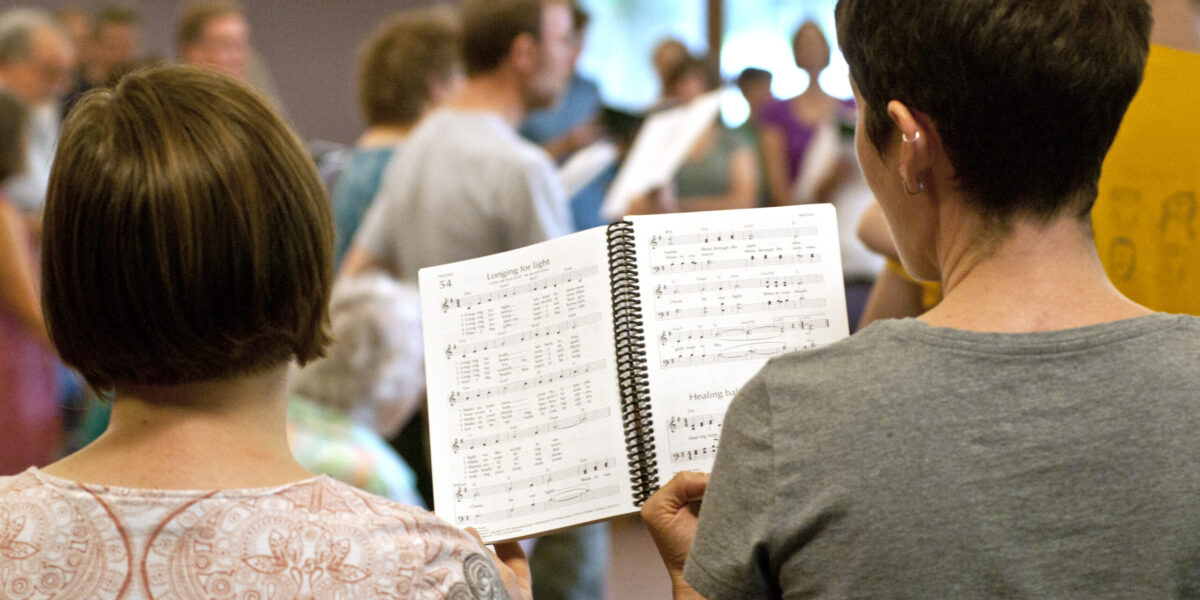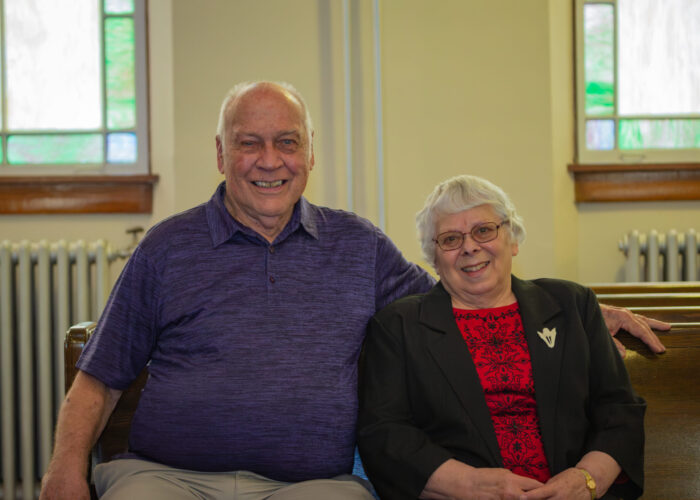How do we keep our church safe in a world that feels more dangerous than ever?
This question has been posed frequently to both Dove’s Nest and the Peace and Justice Support Network(PJSN), especially after 26 people were killed last year at First Baptist Church in Sutherland Springs, Texas. It is asked of Dove’s Nest because of its work with preventing child abuse and keeping kids safe. PJSN because of its work of offering practical peacemaking resources.
It’s a complicated question, but some churches across the county have adopted a simple answer: arm themselves via ushers or other forms of security and be ready to use deadly force if needed.
As Mennonites, we can’t prescribe that. A central tenet of our tradition is we don’t take life, even in self-defense. We don’t believe the Jesus who told Peter to put down his sword would advise us to pick up a weapon.
That still leaves us with the practical question: how do we keep our churches safe? The question of safety assumes the existence of danger. We see two categories of danger that churches need to be aware of. There is the danger that arrives suddenly and loudly, with little or no warning and results in catastrophic damage. Mass shootings fall into this category.
The other danger is hidden and can go on for decades undetected. It too can cause catastrophic damage, though not the type that typically draws news cameras and media attention. Sexual abuse falls into this category. The forms of child abuse include: physical, emotional, sexual and neglect. Sexual abuse is common in church settings.
The challenge for us is to keep these in proper perspective. Of the two, the danger of sexual abuse is much, much more likely to occur in a church setting than a shooting. According to the 2006 Church Member Profile, more than 1 in 5 women in MC USA congregations have experienced sexual abuse or violation, most while they were children or teens. For men, the incidence of abuse experienced before the age of 20 is 5.5%. The abuse didn’t necessarily take place in a church setting, but for many Mennonites, the relationships in our family lives, community lives, school lives and church lives are interconnected. (For society at large, the figures range from 17–25% for women and 3–16% for men, depending on the study and how people define sexual abuse or assault.
In the clear majority of abuse cases, the offender is known by the child—either a family member, friend, teacher, etc. In a similar vein, the most common active shooter scenarios in a church setting involve a spillover of domestic violence. It’s important that we don’t subscribe to the myth of stranger danger.
Of course to the victims and their families of a shooting incident, the pain and damage is real, no matter what statistics may say about how unlikely it may have been. And the desire to prevent this from happening in our churches is logical and healthy.
But whatever may be done to protect ourselves from the risk of sudden, unexpected danger of things like mass shootings, if we haven’t properly taken steps to protect against the tragically common danger
of sexual abuse, we haven’t seriously addressed safety or followed our mandate as Christians is to protect children and the vulnerable. (Matthew 18:6, 19:14)
If your church is wrestling with the question of safety, our recommendation is first to implement a child and youth protection policy. Many churches in Mennonite Church USA have such a policy. A recent survey of MC USA churches done by Dove’s Nest discovered the good news that 75% of MC USA churches have a child protection policy. In 2010, 50% did. Does your church have a protection policy? If you have one in place, do you revisit it as a church periodically, updating as needed?
These are safety questions we need to ask ourselves. And not just once. They need to be an integral part of how we plan and tend to the lives of our church communities.
If you’ve already taken these steps and now are feeling the need to address the possibility of large-scale instances of violence in your church, we believe many of the same foundations of a successful child protection policy can be useful.
Know your communities space well. What are all the ways someone could enter your space? Do you know all the ways to exit your church? Are there places in your building that someone could easily be alone with a child? Do you have windows on internal doors? Where is your first aid kit? Do you know who has keys to the buildings?
What are the communication channels you’d use to if you needed to respond to an incident? Who would be responsible for those channels?
Reviewing things that we assume are known might seem basic. We’d say instead they are essential. Brushing your teeth seems basic, but you do it because it is essential to health. Knowing your church space and how you communicate internally is essential to safety.
These kind of essential questions and intentional awareness can be applied to all churches-large or small spaces, rural or urban, 500 members or 20 members. The final plan you put together will be made in the unique context of your community though.
We can’t offer a simple answer on how to protect your church from a shooting incident or other forms of sudden violence. This will take prayer, discernment and planning in your church community to arrive at a plan that reflects your values and meets your needs.
We’ve put together a resource page that can be found on both of our websites that include articles about church safety and plans on how to deal with disruptive incidents. These may not answer all your questions but are a great place to begin. You can visit that page at PJSN.org.
We hope more churches make similar plans. If your church has such a plan, would you consider sharing it on this resource pages? If you congregation has developed plans to deal with disruptive or violent incidents, please email to jasonb@mennoniteusa.org and we will post them.
We aren’t called to live in fear, as individuals or as church communities, and can take steps to minimize the risks that come with living in world where evil does exist. We encourage your church to do all it can to keep its members safe. We believe that starts with addressing the most likely dangers first, then exploring how you would respond to less likely events, doing both in ways that reflect the words and teachings of Jesus.




